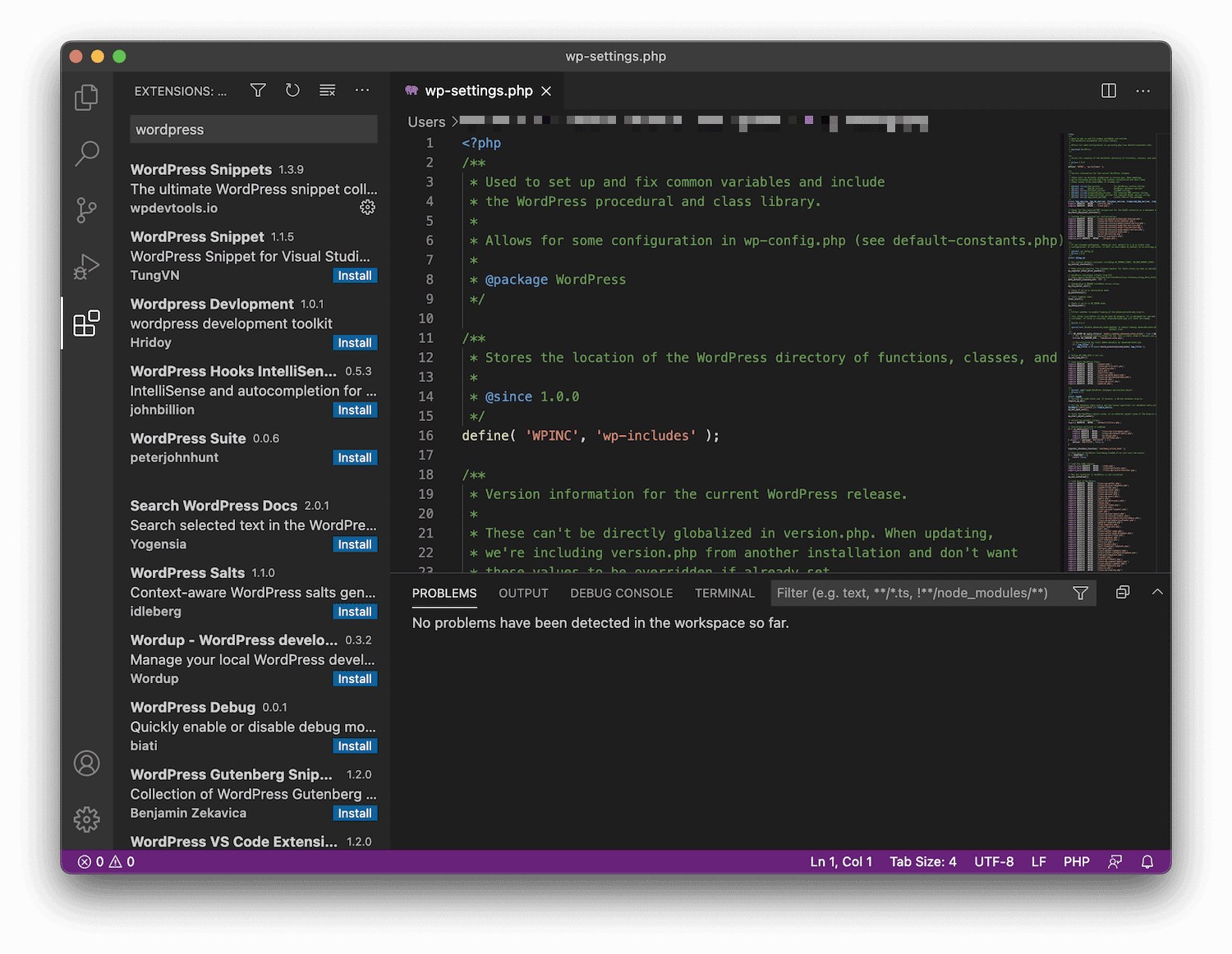10 Awesome Web Development Tools to Use in 2021

There is something romantic and exciting about opening TextEdit or Notepad and typing “<HTML>” to start a new project. This is how many of us started our obsession with coding for the web. In [year], web development tools do more than just record our text: they help us create projects and empower the entire process. In addition, there are many more elements to take into account than HTML and CSS .
The planning phase, for example, is vital. Consider wireframing, design options, and collaborative workflows. You also have to choose the ideal JavaScript framework , whether to use an integrated development environment (IDE), and much more.
In this post, we’ll take a look at 10 web development tools you’ll want to consider using in [year]. But before getting into the subject, let’s talk about what we think is a web development tool.
What do we consider a web development tool?
At first glance, classifying a web development tool seems straightforward. However, even diving into the shallowest part presents some considerations that blur the lines.
For example, consider whether a video streaming service is considered a develop web dement tool. In general, probably not. However, if you use it to record your screen for a specific development application, it suddenly becomes a unique collaboration tool.
In our opinion, a web development tool is something that helps you achieve the objectives of your project in a focused way. Although this does not include individual programming languages, there are subsets, supersets, and frames such as TypeScript that fall on the line. If you want to earn a lot of money , it is vital that you take these aspects into account.
Another example is Git . One could argue that this version control system (VCS) covers a lot of ground. There is a specific language for executing commands, and the core functionality offers a lot in terms of web development in Lahore. However, you can also use it as a learning tool, specifically examining issue tracking logs and commits.
In general, a web development tool can be pretty much anything that makes your project run efficiently and productively. You will notice this diversity in the list of tools.
How Web Development Tools Can Streamline Your Workflow
We will give a warning before the following words: ” Crunch time “.
Yes, this dreaded phrase cries out for web development tools to save time to save the day. Statistics show that more and more projects are using crunch as a standard, and many development industries continue to use it today.
Regardless of whether your business uses or needs crunch and overtime, web development tools can help. These tools do the heavy lifting and automate the mundane work that eats away at your day. As such, they offer an organic boost to your productivity.
However, they can also offer an advantage if you operate under an agile project framework like Scrum . For example, consider how a tool like JSFiddle can help you share snippets with other teams during the queue for one sprint, ready for the next.
Also, while daily meetings aren’t going away, a Discord server or Slack channel could offer a better way to focus and align a set of future tasks, away from the pressure of current sprint goals.
In general, web development tools are as much about planning as they are about executing.
How to choose the right development stack for your project
We’re probably preaching to converts, but a stellar web development tool is worth its weight in a rose gold M1-powered MacBook . That’s why getting the right mix of tools for your specific project is crucial to building a solid working foundation.
If it’s something you haven’t considered before, an initial planning phase will prove invaluable. Spending some time choosing the tools to use delays the coding phase of the project. However, this time will be recovered later, as there will be fewer potential software-related problems. Also, the results will be more homogeneous (since everyone will agree).
Considerations for choosing your development stack
Choosing the right stack for your project boils down to the following:
- Complexity: Consider the complexity of your final product, as this will determine the complexity of the stack.
- Scalability: If your project is for a local company, you will need different solutions from a global company. Therefore, you will need a more scalable stack to achieve your goals.
- Security: It almost goes without saying that what you choose should not compromise user and site security .
- The cost: Of course, no one likes to overspend, and tight budgets will carry more weight than a blank checkbook.
There are two areas in which technologies can be divided:
- Server side: Here, you will want to see the backend technologies that you use. For example, you will have to take into account the choice of hosting and web server, SQL and key value storage , the application and automation frameworks that you are going to use and, of course, the programming language.
- On the client side: The choice of frontend tools will possibly be easier, especially with regard to the languages used. While HTML, CSS, and JavaScript will take center stage, your choice of JavaScript framework (and automation framework) will need some consideration.
When it comes to some real world development stacks , you will notice that many large sites use some combination of JavaScript and React.js , along with Nginx . You’ll also see Memcached , Redis, and Ruby on Rails in the development stacks.
10 awesome web development tools to use in 2021
Without further ado, let’s look at the list of web development tools we recommend using in 2021. We have organized them into categories, but otherwise the tools are not in any specific order. If you’re in a rush, feel free to jump to a specific section on the list.
Local development environments
A local development environment is an essential part of any development stack. However, it is particularly vital for Web Development in Lahore. These are some of the most outstanding local development tools.
1. DevKinsta

The DevKinsta home screen.
We may be biased, but DevKinsta could become the number one web development tool for [year] and beyond.
Cross out that: we are biased and we are proud of what we have published.
For non-beginners, DevKinsta is a way to help you create local WordPress installations in no time. It is a complete suite that allows you to design, develop and deploy a WordPress site for macOS and Windows machines (with a Linux version in preparation).
You can tailor your installation to your current project. For example, your “server” can use Nginx or Apache, a PHP version of your choice, MariaDB or MySQL and much more.

The DevKinsta configuration options.
We also have more things under the hood. You can also debug and test email through the built-in SMTP server , and for database management, you can use the powerful Adminer tool :

DevKinsta’s database manager, powered by Adminer.
Overall, we think DevKinsta is ideal for modern WordPress development. It can fit directly into your workflow.
We have created this tool with developers, designers, freelancers and agencies in mind. However, virtually anyone with daily development needs will find value in DevKinsta – especially (but not exclusively) Kinsta users.
Also, DevKinsta is completely free.
2. MAMP

The MAMP logo.
One might think that classic web authoring and visualization tools are dead and buried in the face of faster sandboxing tools. However, traditional web stacks, such as LAMP, MAMP and XAMPP, continue to grow and evolve.
Typically, they combine an operating system (OS) – Linux, macOS, or Windows – along with the Apache web server , the MySQL database, and the Python, PHP, and Perl programming languages in a stack. As such, a web service stack like this will continue to be used in 2021.
MAMP is the macOS-specific version of the tool. With this approach you install a stack and work on design and deployment. Although the process may be longer than that of more modern configurations, there is still a similar level of flexibility under the hood – or at least, the potential is there.
Whereas in a tool like DevKinsta, you will select from a slick graphical user interface (GUI), with a stack of web services, you have to install the additions you need manually. For example, there is no built-in way to spin a WordPress site without “doing it yourself . “ The situation is similar with the test email .
Like other local development environment tools, MAMP is completely free. However, there is also a premium version of MAMP for Windows and Mac that increases functionality and provides a complete and robust web development tool.

The MAMP Pro control panel
Due to their flexibility and price, classic web service stacks are still on many developer computers. Command line buffs will naturally gravitate towards this solution, especially if you like to use package managers like Homebrew , Flatpak, or Ninite .
Of course, Apache developers will use these stacks as well, as will MySQL and Python or PHP developers. By extension, WordPress developers will feel right at home here too.
3. XAMPP

The XAMPP application
XAMPP is another web service stack that receives a lot of love from PHP developers, including those who create WordPress products. The “X” in the name represents the multiplatform nature of the tool. Offers installers for Windows, macOS, and Linux machines:

The XAMPP download page
Although there used to be differences between the various web service stacks, constant updates and enhancements have evened the field. However, XAMPP has a couple of unique tricks up its sleeve.
For example, MySQL is no longer the default relational database management system (RDMS). Instead, XAMPP uses MariaDB. This is probably a more accurate representation of a production server, given the switch to other solutions after the Oracle acquisition .
Also, there is a web application installer inside the XAMPP package. Bitnami is similar to solutions like Softaculous , but Bitnami is specific to XAMPP:

Bitnami’s home page.
Although there are many applications available , you are probably more interested in the WordPress installer. Still, there are many plugins to choose from, making XAMPP a flexible solution for local development.
Text and code editors
Most developers love to argue over which code editor to use. Okay, we are hyperbolic, but there are a lot of opinions on the subject, with a fervent fan base for each publisher.
However, if the polls are correct , you are probably using Sublime Text , Visual Studio Code (VSCode), or IntelliJ IDEA . It makes sense, as these three tools range from simple text editing to a full integrated development environment (IDE). However, there are others that also deserve a mention. Let’s see some of them.
4. Visual Studio Code
Since its launch in 2015, the use of Visual Studio Code has exploded on development desktops of all kinds.

The Visual Studio Code editor.
It is an open source editor developed by Microsoft that offers enough out of the box to be considered an IDE. It certainly offers enough functionality to capture more than half of the market: 55% of web developers use Visual Studio Code on a daily basis.
In its default configuration, Visual Studio Code is primarily a text editor. However, when combined with its extension library, it becomes modular and flexible enough to meet any of your development needs:

The Visual Studio Code Extension Library
It means that you can install linters and fixers for the language of your choice (yes, ESLint and PHP CS Fixer are there), along with Docker and Vagrant extensions, and much more.
Speaking of languages, Visual Studio Code supports JavaScript, Node.js, and TypeScript out of the box. However, the ecosystem of extensions is so rich that you will be able to find some support whatever the language you are using.
In addition, you will also find a first-rate integration with other Microsoft products, especially with GitHub :

Visual Studio Code has a dedicated VCS integration with GitHub.
Visual Studio is completely free, and given the feature set, it’s great for many. We consider VSCode to be an excellent middle ground between IDEA and Sublime Text. Speaking of which, let’s check out the latter below.
5. Sublime Text

The Sublime Text app.
Sublime Text is a mainstay in the world of text editors. It’s smaller than most other solutions, although its looks lie about the power under the hood.
For example, you will see a lot of what Sublime Text offers in other competitors. The command palette is something that you will see in many solutions because it is easy to use.

Sublime Text command palette.
Additionally, there are powerful keyboard shortcuts for editing, such as making multiple selections to edit multiple columns at once. Also, the Goto Anything feature offers Vim-like keyboard shortcut combinations to navigate your files:

Sublime Text is a premium tool with a very generous trial period. It can be considered free, but to reward developers, an extended use license must be purchased.
In our opinion, Sublime Text provides an excellent user experience (UX) with all the necessities for many small or amateur programmers. It remains a favorite of many developers due to its beautiful visuals, simple design and extensibility.
6. Atom
At one point, Atom was heavily used by developers. However, since the advent of Visual Studio Code, its adoption has declined. It’s a shame because it is a great code editor that is suitable for many different applications.

The Atom app.
It’s an app developed by GitHub, which may explain why it’s been pushed down the hierarchy at Microsoft. However, it is regularly updated and can be considered an alternate version of Visual Studio Code.
Text editing is functional and, like its big brother, it has GitHub integration. There are also many plugins called “packages”:

The Atom Package Installer.
There are many themes available to help tailor Atom to your workflow and projects. Atom includes several themes to choose from, and some, like One Dark, are so popular that they have made their way into other editors as well:

Atom’s One Dark theme.
Atom is a functional code editor that deserves to be tried. However, since Atom is built on top of Electron (no pun intended), some users have complained that large files and projects run slowly. As such, we suggest that it is good for small projects and quick scripts (especially with the built-in terminal package), but it may not be the best for complex work.
7. Notepad ++

The Notepad ++ home page.
At the outset, it’s worth saying that Notepad ++ can’t replace any of the “big” code editors you already use, like IntelliJ IDEA or Visual Studio Code. However, it will give you more power under the hood for simple scripts and general text editing applications.
Depending on your projects, it could tempt you to change. Despite its simplicity, Notepad ++ is used in a wide variety of projects.
It is a Windows-only code editor, which explains the “plus-plus” element in its name. Of course, Notepad is an uncomplicated text editor found by default on Windows installations. Notepad ++ looks like its brother, but it also includes development-specific features such as:
Also, Notepad ++ is flexible when it comes to project management. It supports three different approaches: sessions, workspaces, and projects. Once you start delving into Notepad ++, you will see that you can use it for larger projects than single page scripts.
We believe that Notepad ++ will suit developers who want great functionality, which is also customizable. Usage wise, it has that open source Vim feel to it, which will suit certain types of projects more than others.
8. The JetBrains Suite
When it comes to development IDEs, the JetBrains suite of solutions is going to be at (or very close to) the top of your list. The business model is smart, because although there are many editors available on JetBrains, they are all actually “subsets” of its flagship editor, IntelliJ IDEA .

IntelliJ IDEA is a leading Java IDE
IDEA comes as a Java IDE. It supports practically all the functionality of other IDE tools in its range. And as such, it also supports many programming languages.
For example, PyCharm extracts most of IDEA’s Python functionality and packages it as its own tool. You will also find that phpStorm and WebStorm do the same.

PyCharm is a Python specific IDE that is popular in the language space
Using IDEA is very straightforward: JetBrains has done a great job for you to be able to code rather than mess with settings and adjustments. It may come as a surprise, but the line between using a command line editor like Vim and using IDEA is often thin.
Both tools focus on workflow and efficiency, although IDEA also allows you to import Vim keyboard bindings if you feel comfortable working that way.

The IDEA extensions allow you to use Vim’s keyboard bindings to make you feel like a wizard.
We assume that you are likely to use IntelliJ IDEA if you are working as part of a large project or company with a software agreement. It can be to share projects or to work in a consistent environment. JetBrains products are used by many WordPress developers for their robustness in project management.
Price is also a factor, and IntelliJ relies on a subscription model that often runs to three or four figures a year.

IntelliJ IDEA Pricing Screen
Even so, there are some “community” editions of JetBrains products. However, they are trimmed versions of the main software; essentially, they are open source solutions with the proprietary elements removed.
Additionally, JetBrains offers competitive pricing for open source projects, startups, schools, Docker Captains, and many more niche groups.
Web design and prototyping tools
Of course, a web application is nothing without a good user experience (UX). For this reason, prototyping designs and visuals often requires a specific tool. Design tools are going to be vital on both the server and client side of development. Here are some popular options.
9. Figma
Figma is a very popular web development tool that allows design collaboration.

The editor of Figma.
You can use the drag-and-drop editor to build user-oriented interfaces and other elements. For developers, you can also take code snippets to implement in your projects. Figma makes the process – from ideation to implementation – smooth and keeps revisions low throughout the entire project chain.
You also benefit from a consistent set of tools to help you choose the font and color. This process is in contrast to the use of standalone tools such as Type Scale :

The Type Scale website
… And a subset of web development tools like Adobe Color , Coolors , various color pickers , and much more.

The Coolors Color Picker.
While Figma has value for single-developer projects, it has more benefits for a team as it grows in size. Teams will like the collaborative aspects of Figma, such as the central asset repository and reusable components. Team leaders will also appreciate the comprehensive reporting options to see how team members use the various design systems.
As for pricing, Figma costs $ 12 per “publisher” at the standard level , which rises to $ 45 per “publisher” for company-based teams (for “publisher,” read “seat,” it is the same concept). Therefore, the price could increase depending on the number of publishers to be incorporated.
10. Sketch
Sketch is an exclusive application for macOS that is also highly mentioned among developers:

The Sketch logo.
It’s popular because Sketch packs a lot of functionality under the hood, and it’s also very easy to use, which makes sense given it’s a native macOS app. It looks a bit like Apple’s Xcode IDE , which isn’t bad, and it feels great to navigate.
Of course, you can carry out essential functions like vector editing and resizing constraints. However, there is much more in the application that will help you generate designs and export them to others quickly.
For example, Sketch’s Smart Layout feature , which uses adaptive resizing to fit your dimensions and current layout. There are also plenty of collaboration tools so everyone can dive into a design and help refine it.

An overview of Sketch for Teams.
Sketch differs from a tool like Figma in that a solo freelancer or developer can jump on board for free, and then purchase a subscription once the need exists. In this sense, the Sketch price is a one-time payment of $ 99 or $ 9 per month per user.




